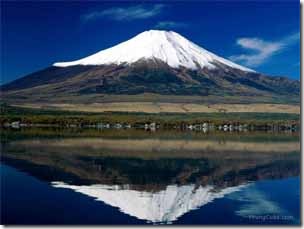 The lava emitted in eruptions at Nyiragongo is unusually fluid. Nyiragongo's lavas are done of melilite nephelinite, an alkali-rich kind of volcanic rock whose atypical chemical composition may become an aspect in the atypical fluidity of the lavas here. Whereas mainly lava flows move quite gradually and not often pose a danger to human being living, Nyiragongo's lava flows may race downhill at up to 60 miles per hr. (up to 100 kilometer per hour). It is due to the low silica content. Hawaiian volcanic eruptions are additionally characterized by lavas with low silica content, although the Hawaiian volcanoes are wide, shallow-sloped shield volcanoes in contrast to the steep-sided cone of Nyiragongo, and the silica content is sufficient to slow mainly Hawaiian flows to walking pace.
The lava emitted in eruptions at Nyiragongo is unusually fluid. Nyiragongo's lavas are done of melilite nephelinite, an alkali-rich kind of volcanic rock whose atypical chemical composition may become an aspect in the atypical fluidity of the lavas here. Whereas mainly lava flows move quite gradually and not often pose a danger to human being living, Nyiragongo's lava flows may race downhill at up to 60 miles per hr. (up to 100 kilometer per hour). It is due to the low silica content. Hawaiian volcanic eruptions are additionally characterized by lavas with low silica content, although the Hawaiian volcanoes are wide, shallow-sloped shield volcanoes in contrast to the steep-sided cone of Nyiragongo, and the silica content is sufficient to slow mainly Hawaiian flows to walking pace.
The last recognized eruption was in 2002. The Volcano erupted and ejected a big cloud of smoke and ash high into the sky and spewing lava down 3 sides of the volcano. One river of lava flowed right via the centre of Goma and into Lagoon Kivu, efficiently bisecting the city. 100 of individuals were burnt to death. As a minimum 400, 000 individuals fled their homes when the lava swept down the flanks of Mount Nyiragongo and via Goma's key street sooner than pouring into Lagoon Kivu on the Rwandan border. The 1 000's of displaced, came back later than 3 days and endeavored to rebuild their lives by erecting wooden huts on top of the lava. Someplace below lay the ruins of their homes.
The lava had set like concrete. It was impossible to dig trenches for water supplies and drainage. Twilight to sink a hole for the trouble-free African drop toilet was not practicable. The sharp irregular stones done walking hard and slashed the tires of cars and motorbikes.
Lava affected all. It was the foundation for individuals’ homes, their yards, the structure blocks for yard walls and the surface of the roads. Buildings this had survived were underwater and set quick one story deep in it.
Even though the 2002 eruption was explained by a lot of Congolese as the worse, although the 1977 was a lot of times than it. The discrepancy is the 1st didn't annihilate houses like the last one, although it’s burnt a lot of peoples. On 10 January 1977, the crater walls fractured, and the lava lagoon drained in a lesser amount of than 60 minutes. The lava flowed down the flanks of the volcano at speeds of up to 60 miles per hr. on the upper slopes, overwhelming villages and killing as a minimum 2000 individuals. Few reports quote a lot higher figures of up to quite a few 1 000 individuals. The hazards posed by eruptions like that are exclusive to Nyiragongo. Nowhere else in the earth does a steep-sided stratovolcano accommodate a lava lagoon accommodating such fluid lavas.
Attempts have been done to level the lava on the way to the lagoon, so this it could become utilized as a road. "I visited quite a few volcanoes with various grades of activity sooner than, although by no means saw its harmful powers in a way like that. The landscapes it made are amongst the mainly bizarre I have ever seen" telling one tourist. Let us hope the individuals of Goma, agreeable ultimately achieve a living with no genuine disasters and evenly disastrous results of political battle!
No comments:
Post a Comment